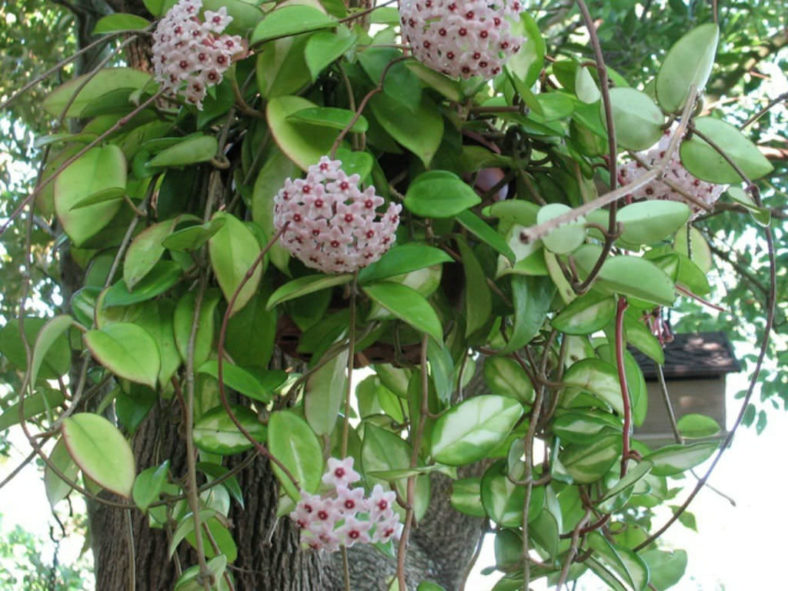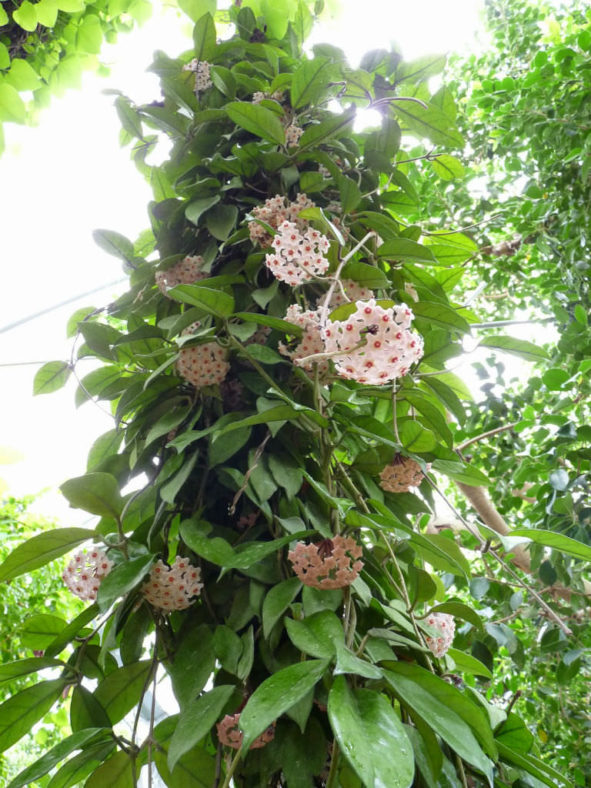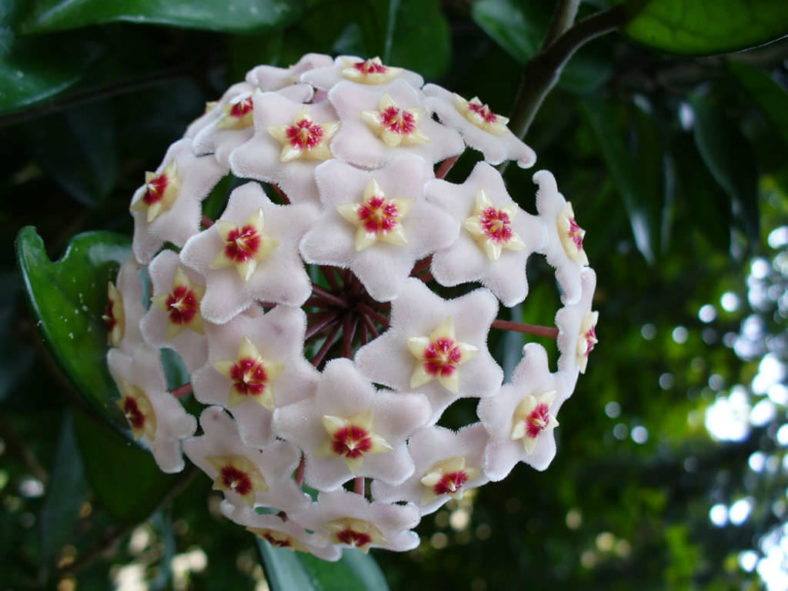Scientific Name
Hoya carnosa (L.f.) R.Br.
Common Name(s)
Honey Plant, Porcelain Flower, Wax Plant, Wax Vine
Synonym(s)
Asclepias carnosa, Cynanchum carnosum, Schollia carnosa
Scientific Classification
Family: Apocynaceae
Subfamily: Asclepiadoideae
Tribe: Marsdenieae
Genus: Hoya
Etymology
The specific epithet "carnosa (kar-NO-suh)" means "fleshy, succulent" and refers to the fleshy leaves of the species.
Origin
Hoya carnosa is native to East India, southern China, Taiwan, Myanmar, Vietnam, Malaysia, the Japanese islands of Kyushu and Ryukyu, the Fiji Islands, and Queensland in Australia. It grows in humid subtropical forests.
Description
Hoya carnosa is a common houseplant with slender, smooth, pale gray stems that twine and climb bearing glossy, dark green, slightly succulent leaves. The stems can grow up to 20 feet (6 m) long. The leaves are stalked, ovate or elliptic, with the base rounded to shallowly cordate, measuring up to 5.2 inches (13 cm) long and 2 inches (5 cm) wide. They are attached to the stem by a petiole up to 0.6 inches (1.5 cm) long.
The star-shaped flowers appear in clusters of 10 to 30, usually in summer. They mature gradually on the same peduncle in 2 to 3 weeks. The corolla is white, sometimes with a pink center, densely papillate, and can reach up to 0.8 inches (2 cm) in diameter. The smaller corona is white with red in the center. The fruits are smooth linear-lanceolate follicles that can grow up to 4 inches long and 0.6 inches (1.5 cm) in diameter.

Hardiness
USDA hardiness zones 10a to 11b: from 30 °F (−1.1 °C) to 50 °F (+10 °C).
How to Grow and Care
Hoyas don't ask for much beyond the well-draining soil and the warm, humid conditions many tropical flowers crave. They don't like wet feet or heavy soil, and as many grow as epiphytes in nature. Give them at least a half-day of sunshine and bring them indoors when temperatures drop below 50 °F (10 °C).
When your Hoya finishes blooming, leave the flower stalk as it may produce new flowers. Removing the stalk forces the plant to produce a new stalk, which delays blooming and wastes energy. These plants are light feeders, and a monthly drink of compost tea or dilute fish emulsion provides all the nutrition these tropicals need. Hoyas like the security of a snug pot, and plants that are a bit root-bound will flower more prolifically than those swimming around in a giant pot.
Propagate Hoyas by cuttings of top growth or by leaf cuttings. The average cutting or leaf will produce a blooming plant in 2 years or less. The easiest method of propagation is by layering.
Learn more at How to Grow and Care for Hoya.
Forms
Links
- Back to genus Hoya
- Succupedia: Browse succulents by Scientific Name, Common Name, Genus, Family, USDA Hardiness Zone, Origin, or cacti by Genus
Photo Gallery
Click on a photo to see a larger version.


